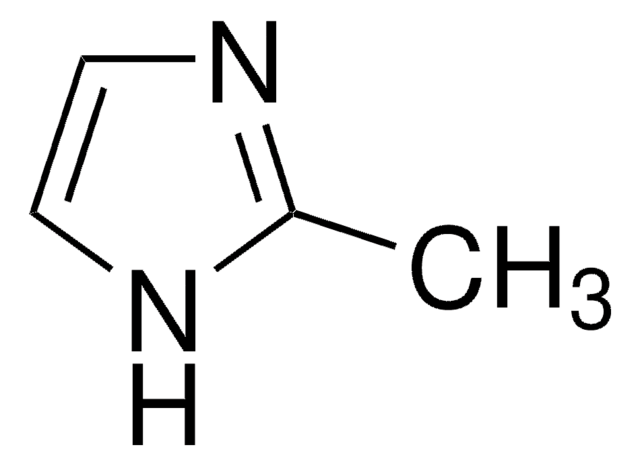12902
Potassium hexacyanocobaltate(III)
≥97.0%
Synonyme(s) :
Tripotassium hexacyanocobaltate(III)
About This Item
Produits recommandés
Qualité
for analytical purposes
Essai
≥97.0%
Forme
crystalline
Pertinence de la réaction
reagent type: catalyst
core: cobalt
Impuretés
≤0.1% free cyanide
Densité
1.878 g/mL at 25 °C (lit.)
Traces d'anions
sulfate (SO42-): ≤500 mg/kg
Traces de cations
Fe: ≤50 mg/kg
Adéquation
suitable for acidity or alkalinity (alkalinity <= 0.15 meq/g)
Chaîne SMILES
[K+].[K+].[K+].N#C[Co-3](C#N)(C#N)(C#N)(C#N)C#N
InChI
1S/6CN.Co.3K/c6*1-2;;;;/q;;;;;;-3;3*+1
Clé InChI
VSUFNKULKBVQQW-UHFFFAOYSA-N
Vous recherchez des produits similaires ? Visite Guide de comparaison des produits
Application
- For the chemoselective reductive amination of carbonyl compounds with aromatic amines to synthesize substituted amines in the presence of polymethylhydrosiloxane as a reducing agent.
- In the ring opening polymerization of propylene oxide to synthesize polyols.
- In the coupling reaction of CO2 with hydrous epoxides to synthesize cyclic carbonates.
Code de la classe de stockage
13 - Non Combustible Solids
Classe de danger pour l'eau (WGK)
WGK 3
Point d'éclair (°F)
Not applicable
Point d'éclair (°C)
Not applicable
Faites votre choix parmi les versions les plus récentes :
Déjà en possession de ce produit ?
Retrouvez la documentation relative aux produits que vous avez récemment achetés dans la Bibliothèque de documents.
Les clients ont également consulté
Notre équipe de scientifiques dispose d'une expérience dans tous les secteurs de la recherche, notamment en sciences de la vie, science des matériaux, synthèse chimique, chromatographie, analyse et dans de nombreux autres domaines..
Contacter notre Service technique







